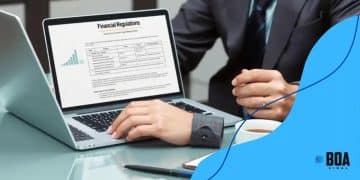Nonbank mortgage lending risks: what you need to know

Nonbank mortgage lending allows greater flexibility and faster approvals but may come with risks due to less regulation; exploring alternatives like traditional banks and credit unions can provide additional options for borrowers.
Nonbank mortgage lending risks are essential to consider when navigating your home loan options. Many borrowers are unaware of these pitfalls, leading to potential challenges in securing a mortgage. Let’s dive into what you should know.
Understanding nonbank mortgage lending
Understanding nonbank mortgage lending is crucial for anyone considering a mortgage. Unlike traditional banks, nonbank lenders are financial companies that provide loans without the backing of a bank. This distinction can lead to unique advantages and challenges.
Many people turn to nonbank lenders for various reasons. They often offer products that cater to borrowers with less-than-perfect credit and provide quicker approvals compared to traditional bank loans. However, it’s important to be aware of the potential pitfalls that can accompany this type of lending.
Key Characteristics of Nonbank Lenders
Nonbank lenders have characteristics that set them apart from traditional mortgage lenders. Recognizing these traits can help you navigate the lending landscape more effectively.
- Flexibility: Many nonbank lenders have a wider range of loan products.
- Speed: The application and approval process is often faster.
- Less regulation: Nonbank lenders may not be subject to the same regulations as banks.
- Fee structures: Sometimes they charge higher fees or interest rates.
When you choose a nonbank lender, consider the flexibility they offer. However, you should also scrutinize the terms closely. While their loan products might seem appealing, the risks can be significant if you’re not careful. It’s crucial to read the fine print to understand any hidden fees.
Evaluating Nonbank Mortgage Lenders
Evaluating a nonbank lender involves looking beyond the attractive offers. You’ll want to analyze their reputation and customer reviews.
- Check customer feedback online.
- Ask friends or family for recommendations.
- Look into their financial stability and licensing.
- Compare interest rates and fees with other options.
Always seek clarity on the type of support you can expect throughout the lending process. This can make a big difference in your overall experience.
Key risks in nonbank mortgage lending
When considering nonbank mortgage lending, it’s essential to recognize the key risks involved. Borrowers often find themselves navigating a landscape filled with potential pitfalls, and being well-informed is the best way to protect yourself.
One significant risk is the lack of regulation. Nonbank lenders may not adhere to the same strict guidelines that traditional banks must follow. This can lead to unexpected fees or less favorable loan terms.
Financial Stability of Lenders
Another critical aspect to consider is the financial stability of the nonbank lender. If a lender is not financially sound, it can affect your loan and overall experience. Borrowers should conduct thorough research before committing to a lender.
- Check the lender’s credit rating.
- Look for any complaints or negative reviews.
- Investigate how long the lender has been in business.
- Understand their funding sources.
Moreover, interest rates can pose a risk. While nonbank lenders may offer competitive rates, they can also have higher rates depending on the borrower’s creditworthiness and loan specifics.
Loan Terms and Conditions
Pay close attention to loan terms and conditions. Some nonbank lenders might use complex language or hidden terms that can be challenging to navigate. Make sure to read everything carefully.
- Examine any prepayment penalties.
- Be wary of loan-to-value ratios.
- Understand the conditions for rate adjustments.
- Ask questions about the application process.
These considerations are vital in avoiding unfavorable borrowing experiences. Awareness and clear communication with your lender can go a long way in ensuring a smoother loan process.
How to evaluate nonbank lenders

To effectively evaluate nonbank lenders, you need to consider several factors that can influence your borrowing experience. It’s essential to approach this evaluation with a clear understanding of what you want from your loan and lender.
Start by examining the lender’s reputation in the market. Research online to find customer reviews and ratings. A lender with positive feedback is generally a good sign. Such feedback often reflects their reliability and service quality.
Check for License and Accreditation
Make sure the lender is licensed to operate in your state. Verification can protect you from potential fraud. Accredited lenders typically adhere to specific standards, ensuring better customer service.
- Look for reviews on reputable sites.
- Consult the Better Business Bureau for complaints.
- Ensure they have a valid license.
- Seek out third-party verification, if available.
Another important factor is the loan options available. Nonbank lenders often provide various mortgage products. Knowing which products fit your needs is crucial. Evaluate terms, rates, and eligibility requirements to find the best match.
Compare Fees and Interest Rates
The costs associated with borrowing can vary significantly between lenders. Focus on understanding the overall cost of the loan, not just the interest rate. Some lenders might offer lower rates with hidden fees that can add up.
- Request a loan estimate from multiple lenders.
- Compare closing costs, origination fees, and other charges.
- Inquire about penalties for late payments.
- Understand how rates are set, especially if variable.
Finally, engage in direct communication with potential lenders. Ask questions about their processes, and ensure you feel comfortable with their level of transparency. A lender that is willing to provide clear answers often indicates better service.
Best practices for loan applications
Applying for a loan can be a daunting task, but following the best practices for loan applications can simplify the process. By preparing properly, you can improve your chances of approval and secure better terms on your mortgage.
Start by gathering all necessary documentation. This includes your identification, income verification, credit history, and any other financial information the lender may require. Having everything ready can expedite the application process.
Understand Your Credit Score
Your credit score plays a significant role in determining your eligibility for a loan. Before applying, check your credit report and address any discrepancies. A higher score can lead to better interest rates.
- Review your credit report for errors.
- Pay down existing debts to improve your score.
- Avoid new debt prior to applying.
- Ensure timely payments on your bills.
Once your credit is in order, it’s essential to research different lenders. Not all lenders offer the same terms or rates, so comparing multiple options is crucial. Consider interest rates, fees, and customer service when making your choice.
Prepare for the Application Process
When you’re ready to apply, fill out the application accurately. Take your time and double-check all information. Inaccuracies can lead to delays or rejections. Make sure your application reflects your financial situation honestly.
- Provide detailed and accurate information.
- Communicate any financial changes to the lender.
- Be prepared to explain your financial situation if needed.
- Stay in touch with your lender during the review process.
Finally, maintain open communication with your lender throughout the application process. If any issues arise, addressing them promptly can help you navigate challenges effectively and stay informed about your application status.
Alternatives to nonbank mortgage options
While nonbank mortgage options can be appealing, it’s essential to consider alternatives that might better suit your financial needs. Knowing your options can help you make informed decisions and potentially save money in the long run.
One alternative is approaching traditional banks. Banks often provide competitive interest rates and a wide variety of mortgage products. They also have established relationships with regulatory bodies, which can enhance security for borrowers.
Credit Unions
Another great option is credit unions. These member-owned institutions typically offer lower interest rates and fewer fees than traditional banks. Credit unions often provide personalized services and may cater specifically to your community’s needs.
- Lower fees compared to banks.
- Personalized service tailored to member needs.
- More flexible lending criteria in some cases.
- Access to unique loan programs for members.
An additional option is online lenders. These lenders can often provide a straightforward application process and quick approvals. Online platforms typically have lower overhead costs, which may translate into better rates for borrowers.
Federal Housing Administration (FHA) Loans
FHA loans are insured by the government and typically require lower down payments. These loans can be ideal for first-time homebuyers or those with less-than-perfect credit. They open doors for people who may not qualify for conventional mortgages.
- Lower down payment requirements.
- More lenient credit score criteria.
- Government insurance protects the lender.
- Wide acceptance among various lenders.
Finally, consider peer-to-peer (P2P) lending platforms. These platforms connect borrowers directly with individual investors. P2P lending can often lead to lower rates while providing greater flexibility in the borrowing process.
FAQ – Frequently Asked Questions about Nonbank Mortgage Lending
What are the main advantages of using nonbank lenders?
Nonbank lenders often offer more flexible loan options, quicker approvals, and cater to borrowers with less than perfect credit.
Are nonbank lenders regulated?
Nonbank lenders may not be subjected to the same regulations as traditional banks, which can lead to fewer protections for borrowers.
How can I ensure I choose a reputable nonbank lender?
Research online reviews, check for licensing, and compare multiple lenders to evaluate their reputation and services.
What are some good alternatives to nonbank mortgage options?
Good alternatives include traditional banks, credit unions, online lenders, and government-backed loans like FHA.






